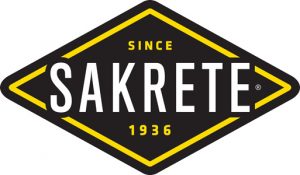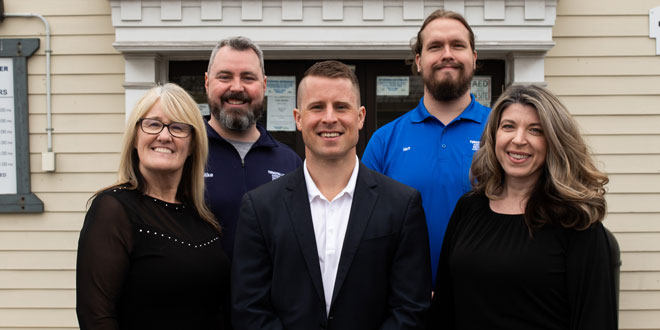
In the human body, atrophy occurs when a person does not use a muscle for a period of time, resulting in limited or lost function. Atrophy of sorts can also occur in the workplace; when employees aren’t working toward goals and continually growing in their roles, they can become complacent and inefficient. Employee development and training programs are crucial to keeping your employees engaged, growing and learning. They also help retain quality employees, improve customer service and add to your operation’s bottom line.
Studies show that employees want to grow, but companies are not providing the right training tools. A study from PwC found that 74 percent of workers are ready to learn new skills or retrain to remain employable in the future. In Axonify’s 2021 Annual Global State of Frontline Work Experience Study, nearly 20 percent of respondents reported rarely or never receiving additional training, and 36 percent only take part in training during big job changes. Less than half of respondents had access to programs to develop career advancement skills even though more than one-third had requested it.
While new employee training is necessary for incoming staff members to learn the standards in your operation and to be able to fulfill their job duties, additional programs that go beyond introductory training can result in more satisfied and productive employees. Training and development programs show employees you are invested in their careers and you want to see them grow and succeed.
No matter the size of your operation, advanced training and development should become a part of your business strategy. To help you get started, Hardware Retailing shares best practices from Turkstra Lumber on managing a successful employee development and training program.
Training to the Core
Employee development and training has been a part of the Turkstra Lumber company culture since its inception. A Dutch immigrant, Peter Turkstra Sr. arrived in Burlington, Ontario, in 1927 and in 1940, he opened Turkstra Construction.
A decade later, Turkstra secured a loan to open his own lumberyard, and in 1953, the first Turkstra Lumber location opened on Wentworth Street in downtown Hamilton to provide building supplies to local customers.
Since then, the operation has seen large growth and now includes 11 retail locations and five specialty divisions, employs more than 250 people and has evolved its approach to training over the last six decades, says Matthew Presz, retail sales manager.
About 10 years ago, Turkstra Lumber’s leadership team was looking to improve its existing training programs and launched Turkstra Lumber University (TLU). TLU elevated the current training programs, adding a mix of courses that each culminates in a certification similar to a college program, Presz says.
Prior to TLU, all of the training programs were specific to their functions, such as point-of-sale system and sales training or safety certifications, Presz says. Now, every training piece falls under the TLU umbrella, including the mandatory orientation training every employee takes when they start at Turkstra Lumber.
TLU courses focus on training sessions for the building industry and are open to all Turkstra Lumber employees. Contractors and construction professionals are also welcome to take courses from TLU to earn the same industry certifications.
“Some contractors will send their teams to our training, which is another great touchpoint and a way for our company to connect with them and introduce them to the products and services Turkstra offers,” Presz says.
Programs under TLU include specific product training, called Build-It-Better, installation training with access to a professional installer designation from major vendors and region-specific safety training and certification.
“The Turkstra family wanted to provide a very safe environment and world-class customer service for our employees and customers,” Presz says. “Reaching that level requires many hours of training and education to get it right, but the end result is being able to provide a higher level of service. Turkstra Lumber University has allowed us to achieve those goals.”
Currently, TLU offers training in six product categories under the Build-It-Better program, including fence and deck; trim; interior doors and hardware; siding; windows and exterior doors; and garages, sheds, barns and steel.
Once a student completes a course in a product category, they are considered an expert in that category and earn the designation of coach. Each course completion also comes with an hourly wage premium.
“If an employee is willing and eager to provide a higher level of service to our customers and advance within the company, we want them to accumulate Build-It-Better product category certifications,” Presz says. “With our hourly wage premiums, our employees are incentivized to master certain product categories, which ultimately provides more value to our customers, and employees in turn earn higher wages.”
All of the courses are voluntary, and employees can take courses whether they are a brand new employee or veteran staff. Company managers will often recommend employees to participate in TLU if they think the employee would be a good fit for a certain training program, Presz says.
“The sky’s the limit on the number of courses they can take,” he says. “If you’re willing to become an expert, you should be compensated accordingly. If you’re a master of six product categories, you’re worth the additional wage we’re paying you.”
Reaping the Benefits
When it was first conceived, the leadership team at Turkstra Lumber envisioned that TLU would be managed by the human resources team. The program grew and evolved quickly, so the company invested in a full-time training coordinator, promoting Shari Reaume from within. Health and safety coordinator Marianne MacDonald also joined TLU for new employee orientations and safety training.
Recently, Mike Rabjohn, manager of the customer service branch and Build-It-Better training, has been responsible for launching additional Build-It-Better Course Certifications, part of the overall TLU vision.
“The training role is shared so that we can leverage expertise from multiple parts of the business. It is not an easy role to hire for, which is why we have always promoted internally,” Presz says.
The company adds new training programs based on industry and internal needs, health and safety concerns, recent events, the addition of a new product line or simply to raise the bar on customer service and experience. One of the biggest challenges the program faces is the creation of each training program because of the time and effort involved and the difficulty in achieving the right level of detail necessary for each course to be successful, Presz says.
“It can be a challenge to find the right amount of detail,” he says. “We want to be sure we’re creating a program that can be done in a reasonable amount of time and still provide our staff with the expertise they need to provide that extra value to our customers.”
Getting a new program in place can take as little as a few weeks up to a full year, depending on whether the company chooses to outsource any of the training courses.
Presz says the company has been able to overcome the challenges of creating new training by adopting a team effort approach. The company has a “power team” that meets together in-person and over Zoom to curate the information needed for each course and to make sure the information is vetted by external industry experts when required.
In spite of the challenges, TLU has yielded positive outcomes for the company. Presz says the employees feel more empowered and are earning higher wages after completing training courses, which leads to better employee retention and allows Turkstra to recruit higher-quality employees. Turkstra is transparent in the wages employees can earn; the company created a wage grid that shows how much in additional wages an employee can earn for completing courses.
“When employees know they have the ability to advance their careers and also make more money, while providing greater service to customers, everybody wins,” Presz says. “Many times when you’re in a retail role, you don’t always know when you’re going to get a wage increase, you just go along hoping you’re doing a good job and will eventually make more money. Our employees know that if they do A and B, they’ll get X amount more money. Our employees know they can bank on it.”
Currently, TLU is undergoing major improvements in the product category training under the Build-It-Better program, continually investing in those categories and looking to raise the bar with the highest quality training.
Presz says the company plans to add two more Build-It-Better categories, general home renovations and basement renovations, by the beginning of 2023. Other improvements include adding more hands-on, practical experience that relates to the challenges customers face and creating additional videos to show step-by-step expertise.
“We can always raise the bar in the industry, and that is exactly what we are doing,” Presz says.
The addition of TLU to the Turkstra Lumber family also fits into the company’s culture of investing in their employees and treating employees as family. The company experiences little turnover with employees who are proud to have been with Turkstra Lumber for 20, 30, 40 years and longer.
“Turkstra Lumber University is a boost to morale. People enjoy helping each other earn more money and better help customers, truly everyone wins,” Presz says. “Our customers are getting more value by being able to come into our stores and talk to a certified coach, employees are happy because they are learning and earning more and the company continues to grow.”
5 Tenets for Successful Training
Whether your employee development program is large or small, here are five aspects that should be a part of any training process to help your employees grow.
- Clearly defined goals. Let employees know what they are expected to learn and take away from training.
- User-friendly channels. Whether online or in-person, make the training easy to follow and engage with.
- Frequent feedback. Don’t wait until the end of training to let employees know how they’re doing; provide consistent reviews so they can improve as they go.
- Engaging content. Even the most dull topics can be more engaging with well-written and presented content.
- Buy-in from leadership. Involve owners and managers in the training process so employees can see their leaders are engaged and believe training is important.
Training Program Tips
No matter the size of your operation, learn the top five components your training programs should include here.
 Hardware Retailing The Industry's Source for Insights and Information
Hardware Retailing The Industry's Source for Insights and Information








